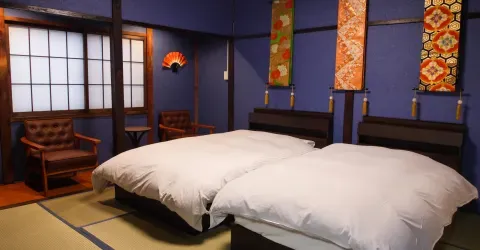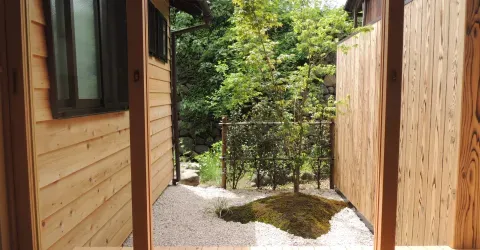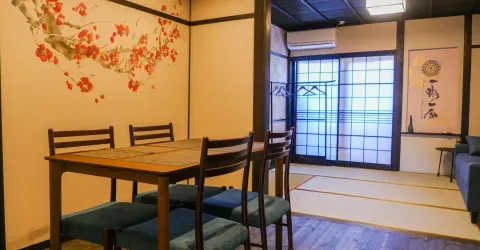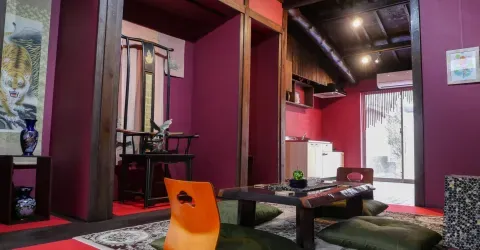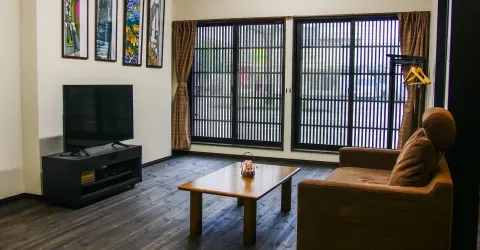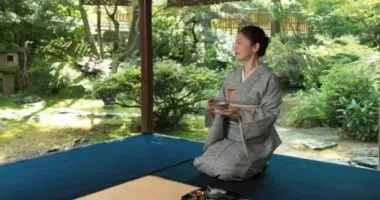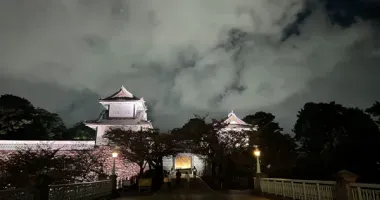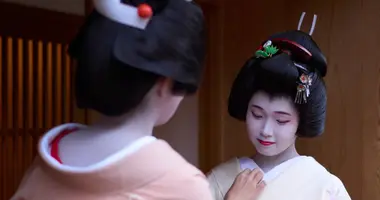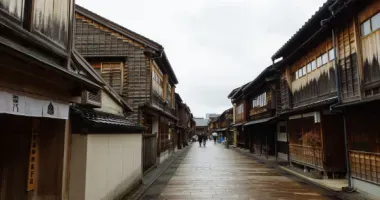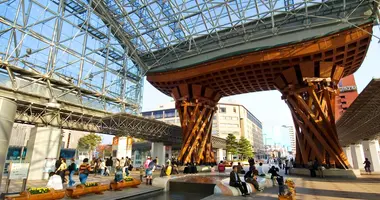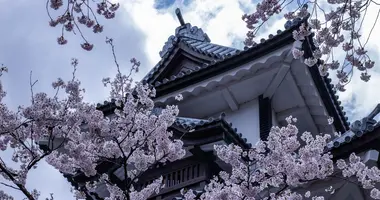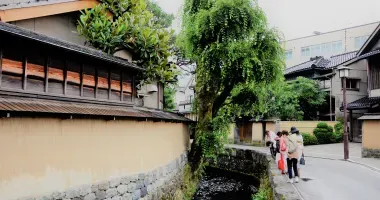Gokayama: Discover the charms of this traditional Japanese village and UNESCO World Heritage Site
- Published on : 16/06/2024
- by : Japan Experience
- Youtube
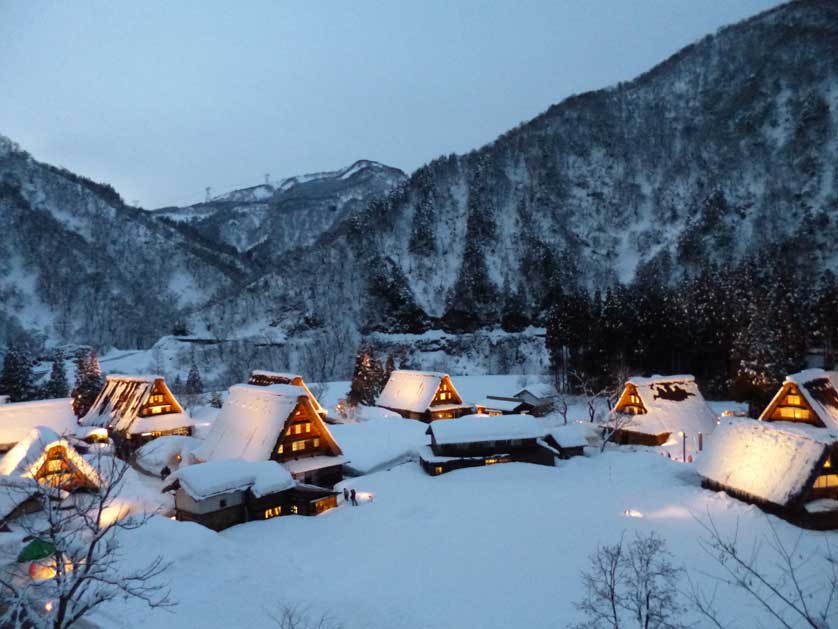
The gassho-zukuri houses of Gokayama in Toyama Prefecture under snow
Gokayama is a historic area located in Nanto, Toyama Prefecture, Japan. It is known for its traditional gasshō-zukuri houses and has been designated as a UNESCO World Heritage Site alongside nearby Shirakawa-go. Due to its secluded location, Gokayama has maintained a very traditional lifestyle and culture.
The history and location of Gokayama
Gokayama is situated in a river valley surrounded by the rugged high-mountain Chubu region of central Japan, along the Shō River in Gifu Prefecture and Toyama Prefecture. The valley was a remote and isolated area for a long period of time, with difficult access that severely restricted the connection of this region with the outside world until around the 1950s. According to legend, the area was one of the places the defeated Taira (Heike) clan fled to after their defeat by the Minamoto (Genji) clan at the Battle of Dannoura in 1185, during the Edo Period. The isolation of Gokayama led to the development of its unique culture and traditions, including the architectural tradition of the Gassho-style farmhouses.
The unique architectural style of gasshō-zukuri houses
The gasshō-zukuri houses of Gokayama are characterized by a steep thatched roof that resembles two hands joined in prayer. This architectural style was developed to withstand the weight of the region's heavy snowfalls in winter. The houses are large, with three to four stories encompassed between the low eaves, and were historically intended to house large extended families. The roofs are supported by stout oak beams and lashed together with rope, without using any nails. The steep pitch allows snow to easily slide off. The enormous attic space under the roof was used for cultivating silkworms, while the areas below were often used for the production of arts and crafts like Japanese paper (washi) and nitre for gunpowder.

Gassho-zukuri houses, Gokayama district, Toyama, Japan
Exploring the hamlets of Ainokura and Suganuma
The Gokayama region includes the two historic villages of Suganuma and Ainokura, which together with Ogimachi Village in Shirakawa-go comprise the UNESCO World Heritage Site. Ainokura is the largest farmhouse village in Gokayama with 20 gassho-zukuri houses, most dating from 100 to 200 years ago, but with the oldest going back 400 years. The village has stone walls and small copses of trees to protect it from heavy snow. Suganuma is smaller with 9 remaining gassho houses, surrounded on three sides by the Shogawa River. During the Edo period, the economy was based on Japanese paper, sericulture, and saltpeter production.
The traditional industries and economy of Gokayama
Due to the mountainous terrain and paucity of flat land, Gokayama offered little opportunity for the traditional cultivation of rice. Farmers historically supplemented their yield with other grains such as buckwheat and millet. The marketable products coming from the area were Japanese paper (washi), nitre for gunpowder manufacture, and sericulture (silkworm farming). The production of silkworms has been traced back to the 16th century and thrived until the 1970s. It was the requirement for large quantities of indoor space for silkworm beds and for the storage of their food supply (mulberry leaves) that led to the development of the Gassho-style house, with its multi-leveled division of roof spaces to increase the functional area.
Visiting Gokayama: how to get there and what to see
Gokayama can be reached by car or bus from Kanazawa, Takaoka or Takayama. A rental car provides the most flexibility to tour the area. By public transport, take the Hokuriku Shinkansen from Tokyo to Shin-Takaoka Station, then a bus to Gokayama. Once there, explore the gassho houses, some of which serve as museums, inns or restaurants. Enjoy the peaceful rural atmosphere and traditional scenery, especially stunning with the thatched roofs under snow in winter or with fresh green rice paddies in summer. Buy some local souvenirs of washi paper, straw sandals, woodcarvings or other handicrafts. And don't miss the viewpoints overlooking the photogenic villages nestled in the mountains, particularly beautiful with autumn colors.
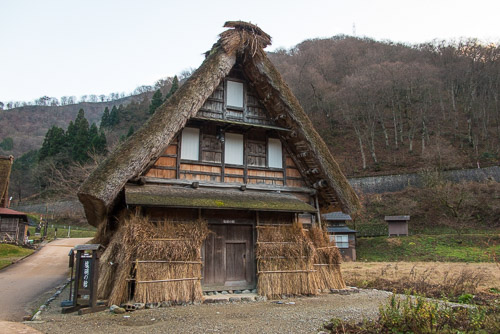
Suganuma, Gokayama district, Toyama, Japan
Experiencing the local culture and traditions
To really immerse yourself in Gokayama's singular culture shaped by its isolation, stay overnight in one of the gassho houses converted into minshuku inns. Sleep on a futon on tatami-mat floors, gather around the irori sunken hearth, and enjoy home-cooked regional cuisine. Gokayama is also known for its folk traditions like the kokiriko dance with lively festival music, and mugiya-bushi songs lamenting the fall of the Heike clan, performed at local events. At the Gokayama Washi paper workshop, you can try your hand at making your own postcards with this traditional craft. Exploring one of the largest surviving gassho houses, the Iwase Residence, gives a sense of life in these ancient farmhouses.
Gokayama's international relations and twin cities
The historic villages of Gokayama were registered together with Shirakawa-go as a UNESCO World Heritage Site in 1995, inscribed under the criteria as an outstanding example of traditional human settlement perfectly adapted to its environment and socio-economic circumstances. Gokayama is also twinned with another World Heritage site famous for its unique thatched roof houses - Alberobello in Italy.
Preserving Gokayama's heritage for future generations
Though the Gokayama region remains secluded, in recent decades it has seen increasing numbers of visitors coming to admire the rare gassho-zukuri houses and experience the traditional rural lifestyle and culture. To protect the villages, each is surrounded by a preservation zone with strict regulations on development and construction to maintain the historic landscape. The gassho houses are carefully maintained according to traditional techniques, rethatching the roofs every 15-20 years. Intangible heritage like the kokiriko folk dances and mugiya-bushi songs are also passed down through the generations. Visiting Gokayama supports the local community in their efforts to preserve this singular cultural heritage for the future, while offering a step back in time to experience the atmospheric charms of old Japan.
To plan your trip to Gokayama, check the Nohi Bus timetable and information in English. You can visit Gokayama on a day trip from Takayama, Kanazawa or Nagoya. Consider combining it with other nearby destinations like Shirakawa-go, Gujo Hachiman or Gero Onsen. Check the seasonal Kaetsunou bus routes to Gokayama. To learn more, browse books on Japanese history and culture.
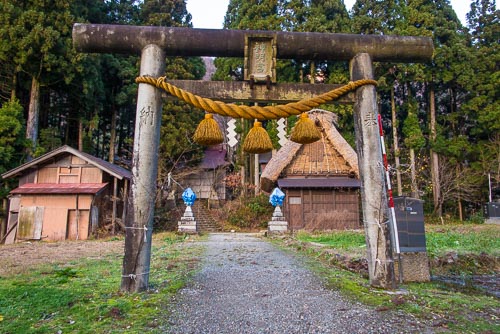
Shrine torii, Gokayama district, Toyama, Japan
Suganuma
Suganuma hamlet lies 15km north of Ogimachi in a beautiful location near a bend in the Sho River surrounded by hills. The village consists of 9 gassho-zukuri farmhouses, with the oldest dating back to the 1830s during the late Edo Period. The village also has a small Shinto shrine, Jishu Jinja. Although Suganuma is the smallest of the World Heritage gassho-zukuri villages, it has two museums: Gokayama Minzoku-kan with displays of local folk crafts, and Ensho no Yakata with exhibits on the secret gunpowder production that took place here. From the car park you can walk down to the village or take an elevator.
Ainokura
Ainokura is another extremely beautifully located village 10km north of Suganuma, with 23 gassho-zukuri farmhouses, a small shrine and temple. The village has stone walls and small copses of trees to help protect the vegetable patches and other cultivated areas from the heavy winter snow. Ainokura has a folk museum, the Ainokura Minzoku-kan, dedicated to the area's hand-made washi paper production and local toys. A number of the houses also serve as souvenir shops selling local arts and crafts such as hand-made woodcarvings, straw sandals, baskets and brushes. The gassho-zukuri farmhouses in Gokayama have slightly steeper roofs than those in Shirakawa-go as the snow is heavier in this region.
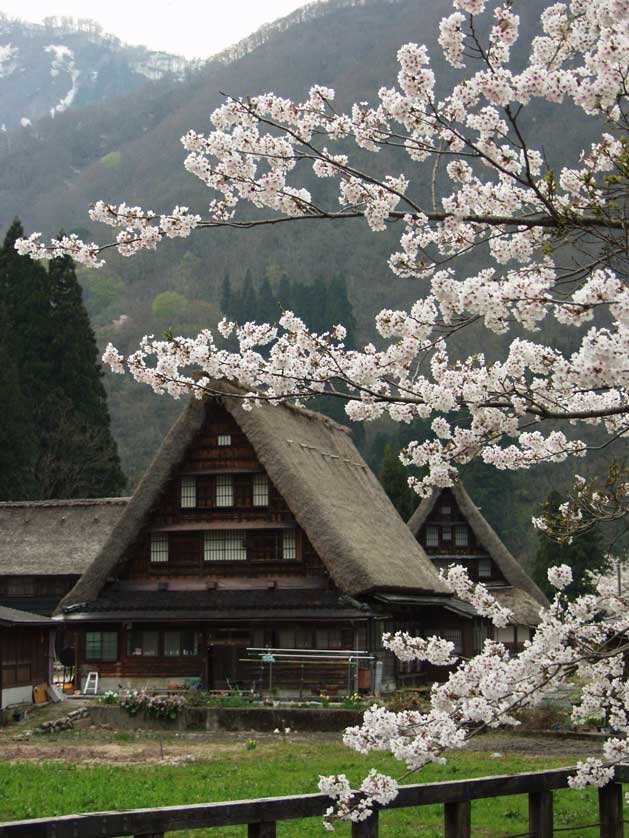
Suganuma, Gokayama district, Toyama, Japan
Access
Gokayama's Ainokura and Suganuma villages can be reached by bus from Takaoka and Takayama. Nohi Bus has services from Kanazawa and Nagoya which are more regular from April to November. Buses from Kanazawa leave for Suganuma several times a day, taking 1 hour and 15 minutes. From Takayama there are numerous daily buses to Shirakawa-go taking 50 minutes, from where you can catch connecting buses to Suganuma (25 minutes) and on to Kanazawa. Check the Nohi Bus timetable and information in English. There are also a couple of buses per day from Nagoya Meitetsu Bus Center to Shirakawa-go, taking about 3 hours. From Gero Onsen, there is one bus a day to Shirakawa-go. Additionally, there are Kaetsuno local buses from Johana to Ainokura and Suganuma. By car, exit the Tokai-Hokuriku Expressway at the Gokamachi I.C and take National Highway 156.
